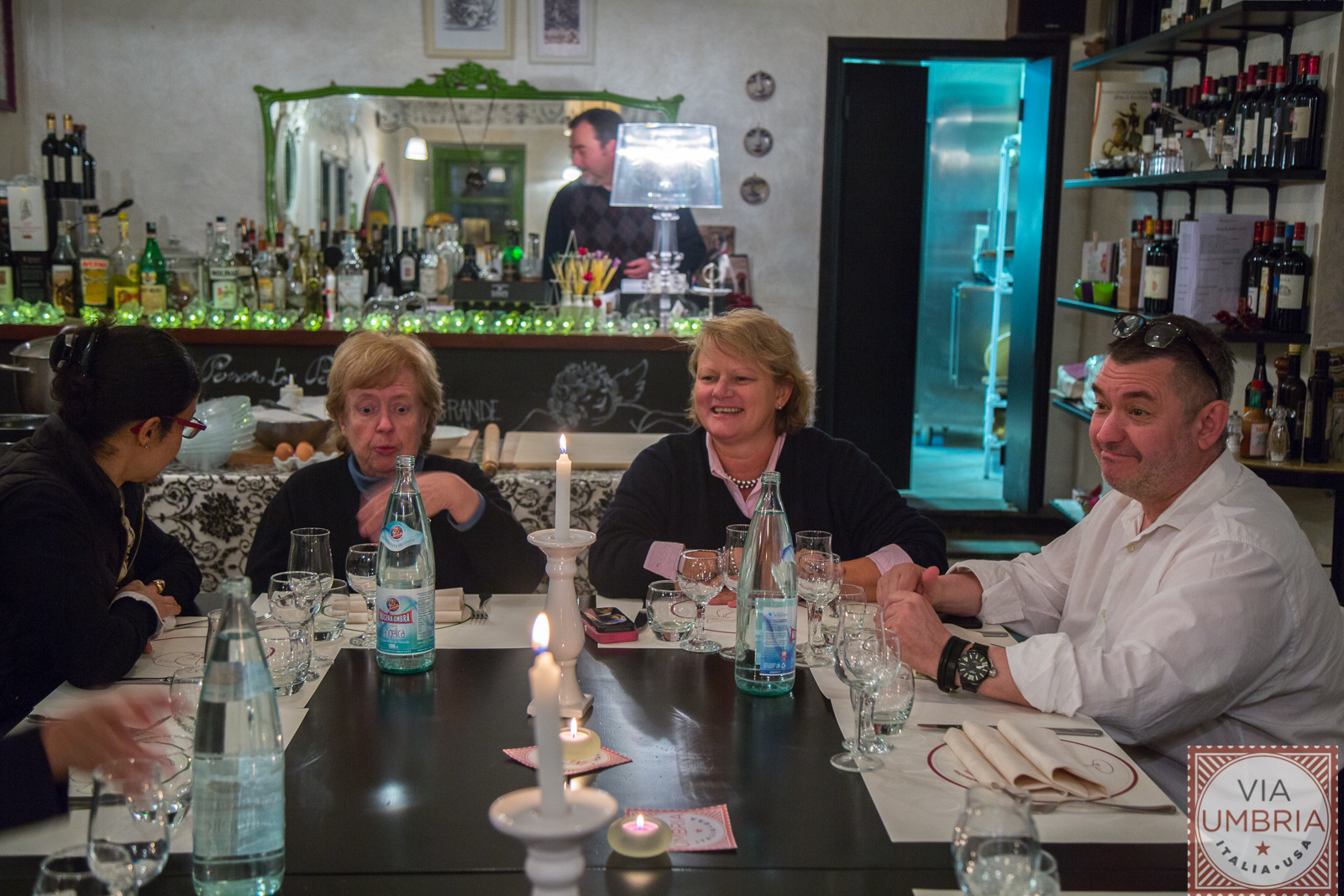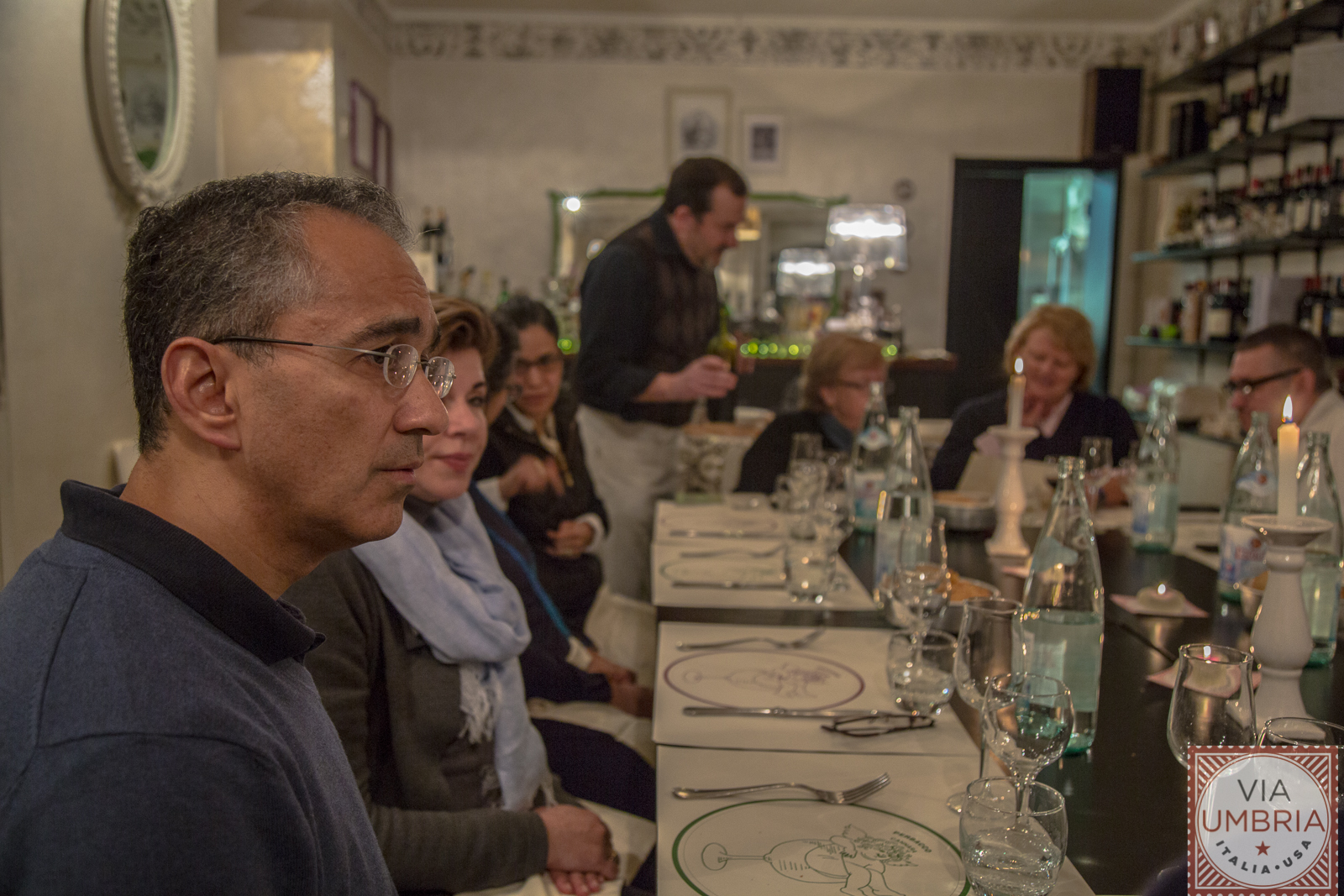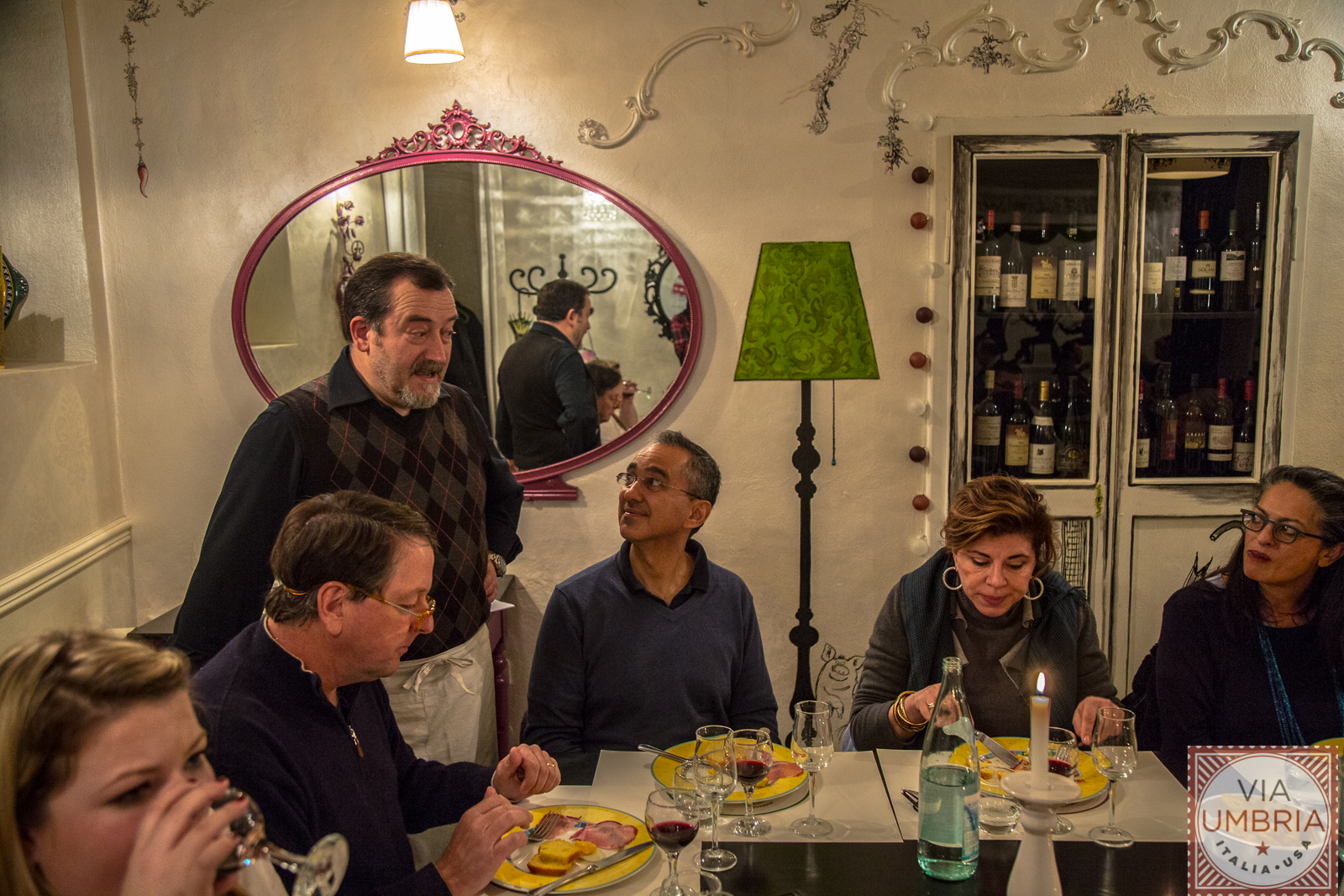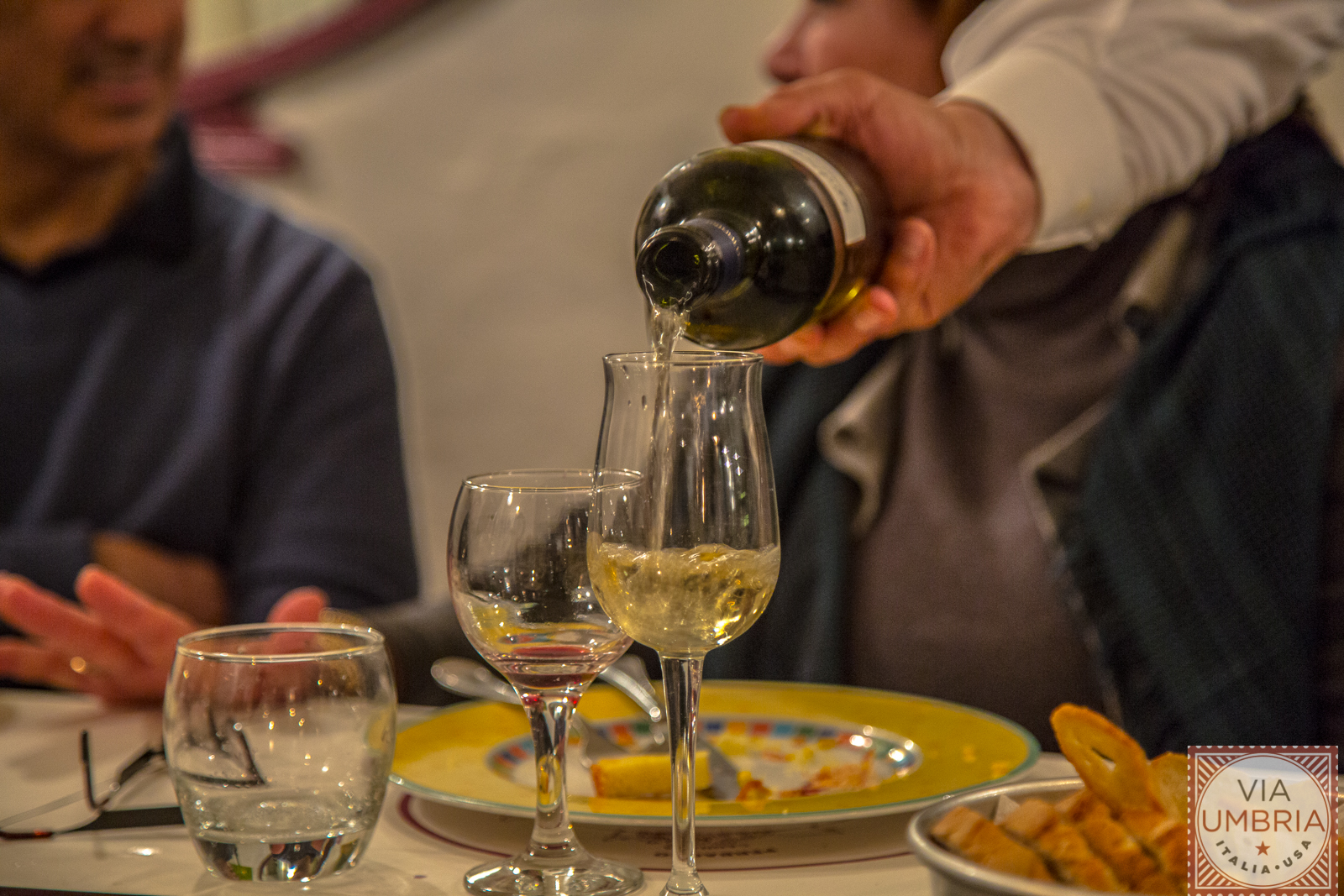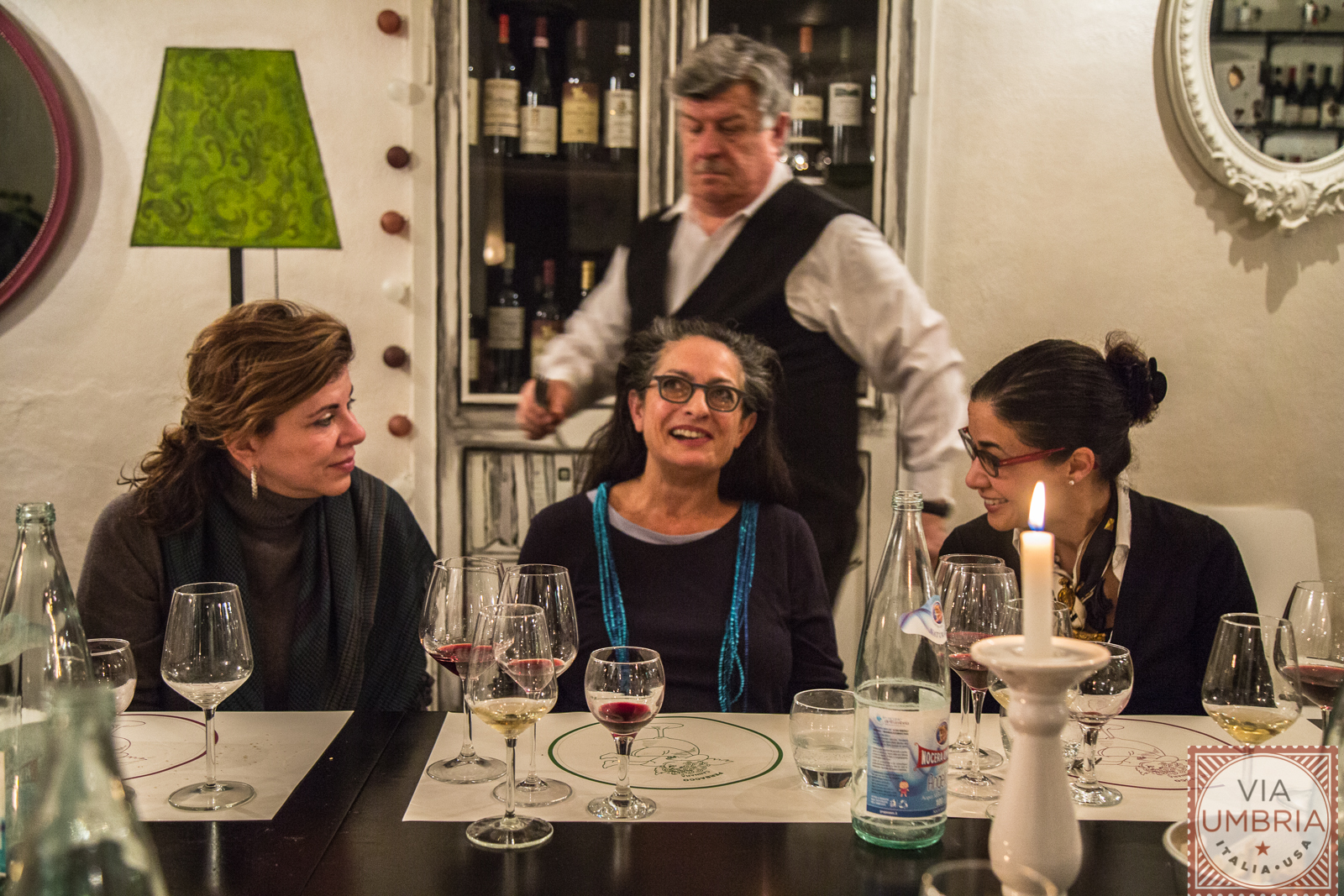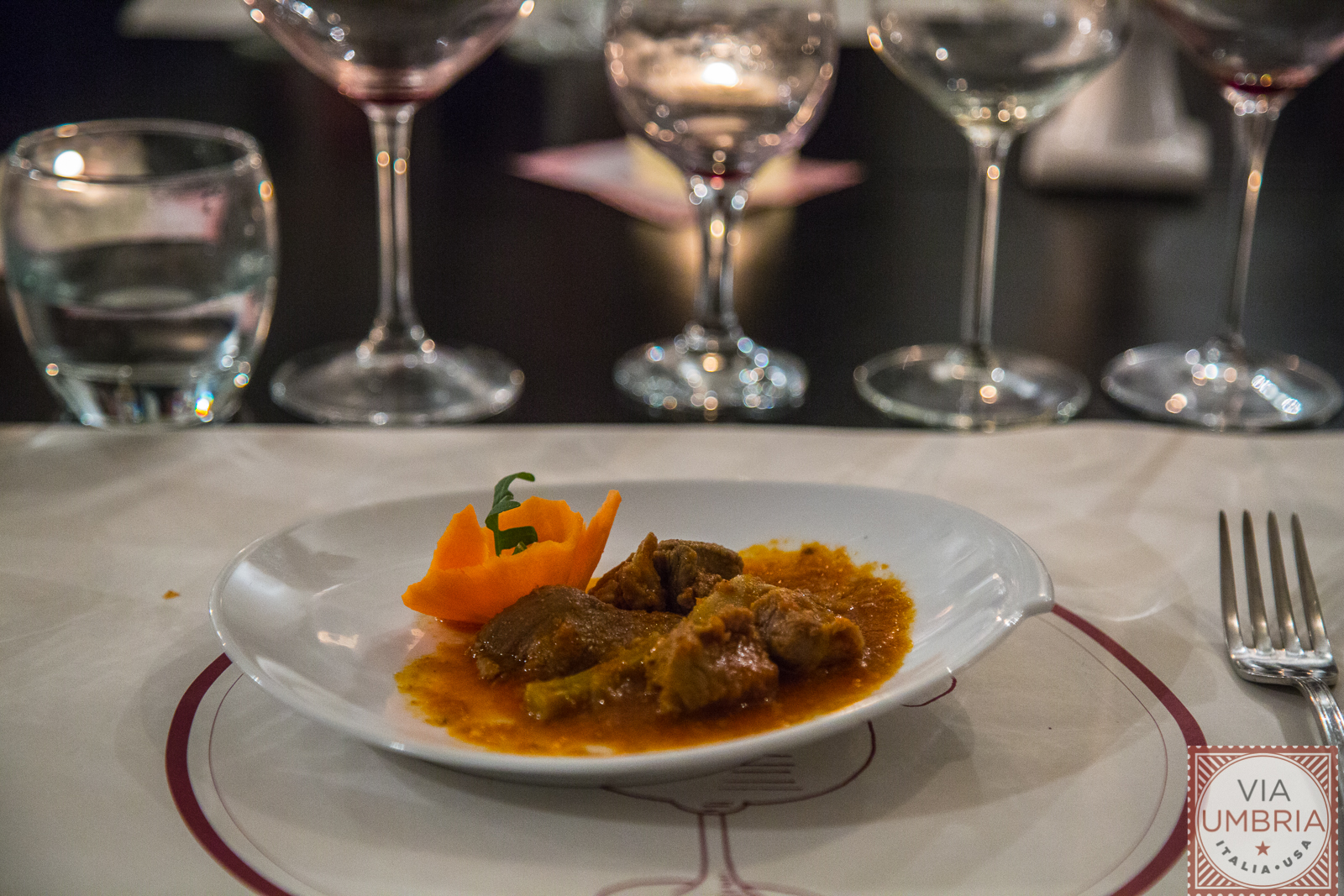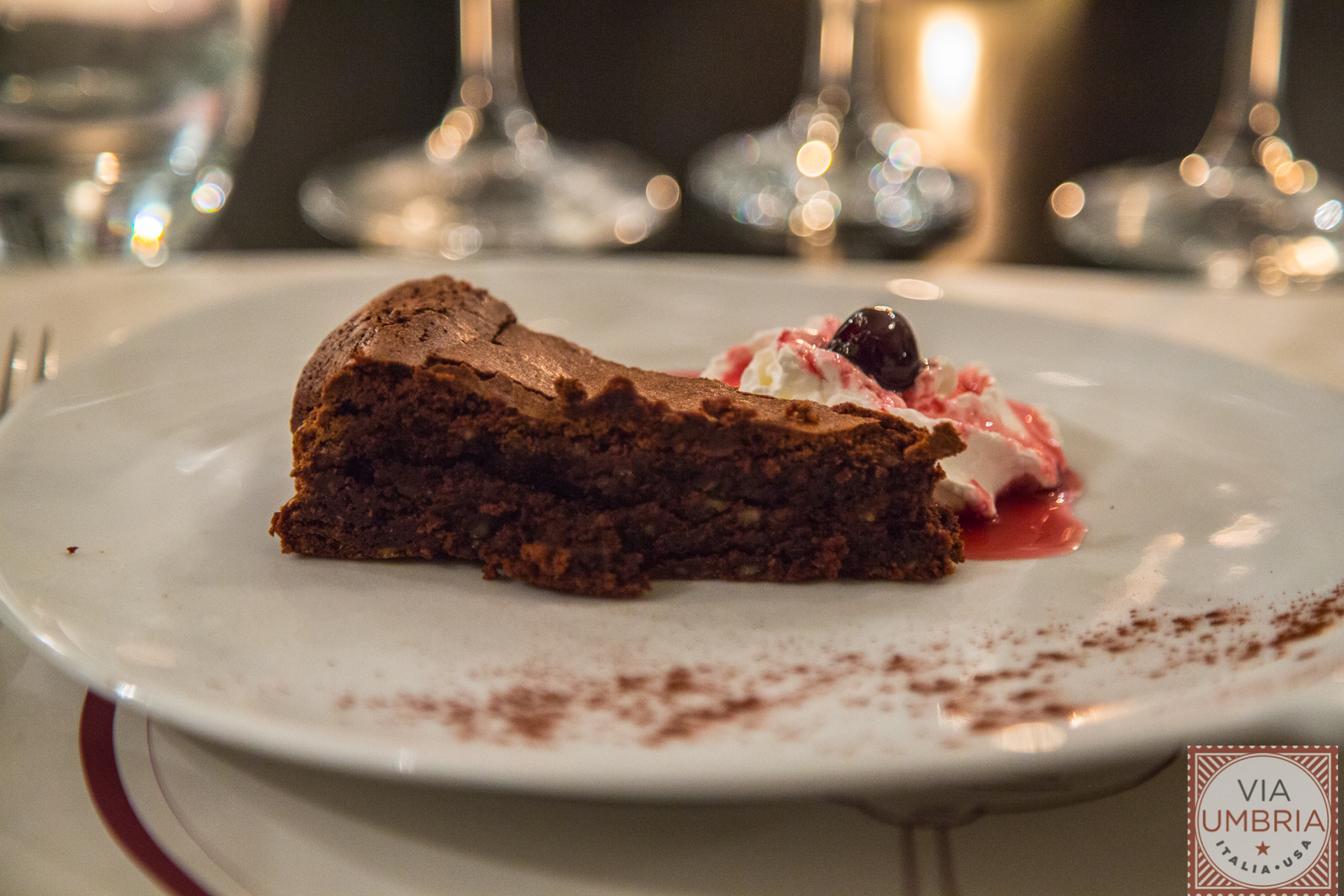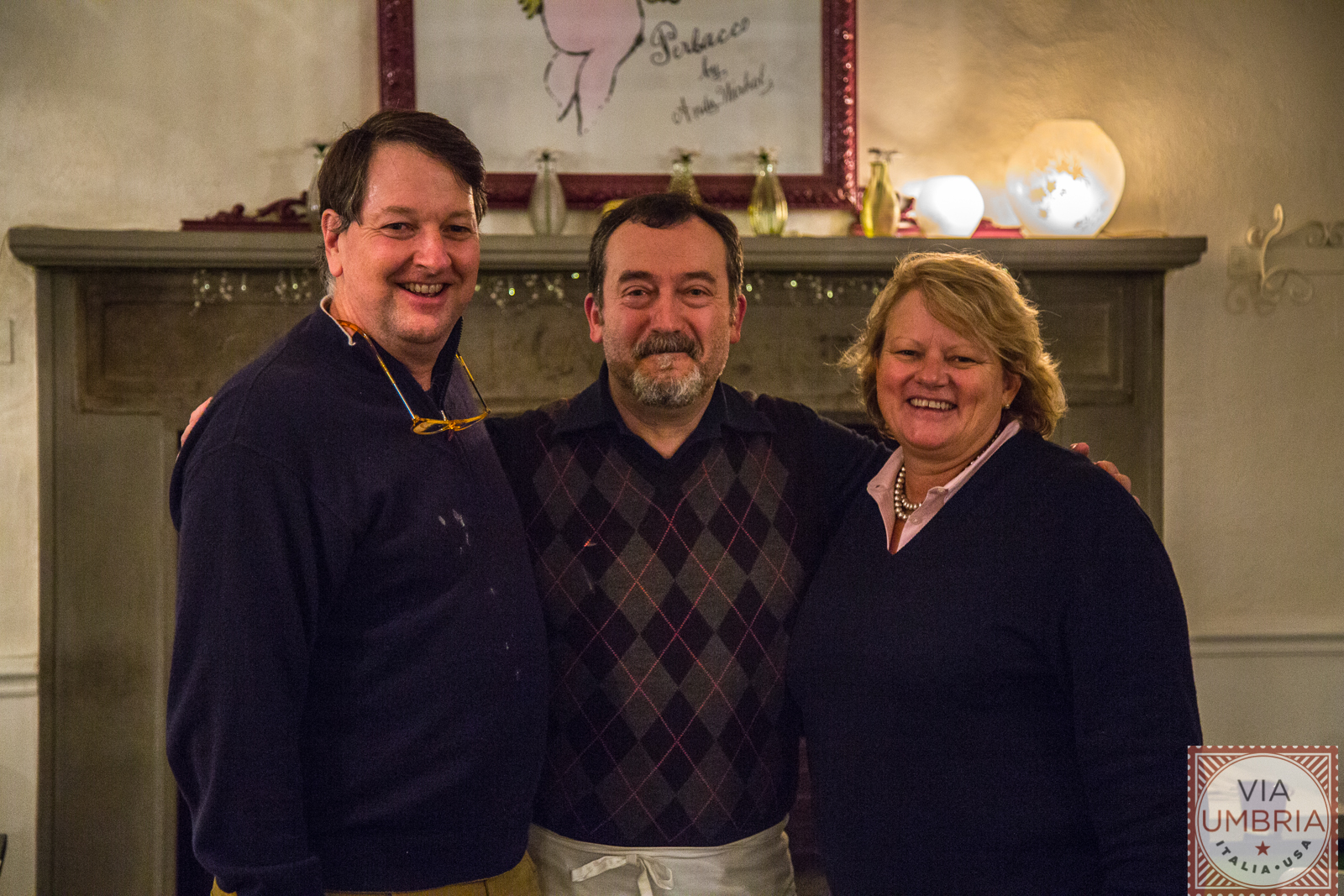Three o’ clock is a blissful hour at Via Umbria. Late afternoon sun streams through the storefront windows, bathing the shelves in soft, golden light. Since I started writing for Via Umbria last month, this has always been my favorite time to pop downstairs and taste the scrumptious samples scattered throughout the shop: perhaps a morsel of mostaccioili by the register, or a cheddar crumble at the cheese counter. But yesterday, tantalizing aromas of bacon and freshly grated parmesan wafted from the cafe, and I had a hunch that an even greater snack lay in store.
Ernesto Parziani, chef and owner of the celebrated Umbrian restaurant Perbacco, was in the midst of a mouth-watering pasta and sauce cooking demonstration. With his week-long visit drawing to a close, I knew that this was an opportunity not to be missed.
Rolling pin in hand, Ernesto smiled and waved me over to his station, which was scattered with eggs, flour, parmesan wedges, and an array of pasta-making instruments. Water boiled next to a sizzling pan of bacon on a portable stovetop. I trotted over as Ernesto began to press a small, yellow mound of dough into the table.
I thought of the trays of delicate, ribbed tubes of Garganelli pasta that participants fashioned in his cooking class on Sunday, and wondered what was in store for this dough.
“I like to teach fresh pasta,” Ernesto told me as he rolled the mound of dough into a circle the size of a tortilla. “But you must find right consistency. If it’s too hard, it is difficult to roll. If it’s too soft, it sticks to everything.” He began to dust the dough with fine, white flour.
“My favorite dish to make is pasta. For us, in Italy, it’s like bread,” he explained, We eat it all the time, everywhere, with vegetables, with meat sauce, with fish, with eggs.” I gulped, mouth watering at the thought of such a world. Ernesto began pressing the dough into the taut steel strings of a chitarra, a guitar-like cooking instrument that Ernesto used to slice the flat yellow circle of dough into delicate strands of pasta before my eyes.
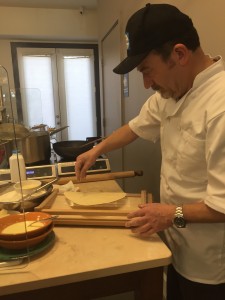
I hovered over him in awe. “How did you learn to do this?” I asked.
“It was obvious,” he shrugged. Of course. I should have known.
“When you see your mother, your grandmother make pasta three days a week, it is obvious,” Ernesto smiled. I glanced down again at the spread of ingredients, and wondered aloud about the presence of the eggs. Wasn’t pasta just … water and flour?
“In Umbria,” Ernesto explained, “we used to make pasta without eggs. Just flour and water, or perhaps one egg white without the yolk. It’s called Strangozzi.” Ernesto pried a strand of pasta from the chittara and brought it to his neck, feigning strangulation. “We eat it simply, at home, with tomato sauce.”
“You see,” he continued, “in Umbria, we started to add eggs when we began selling eggs to make money. But in the North of Italy, they have always used a lot of eggs. For example, where my wife comes from–Parma, Bologna, places in the region of Emilia-Romagna–they use a lot of yolks … and this.” Ernesto gestured towards a large bowl of white flour.
“But in the South, like Sicily, near North Africa, they make dry pasta, with semolina.” He pointed to a smaller dish of tan, coarse flour. “They make pasta, but they make couscous too. Whereas in the North, they make pasta, but also they use corn flour to make polenta.” Ernesto arranged his raw pasta into a nest on the table.
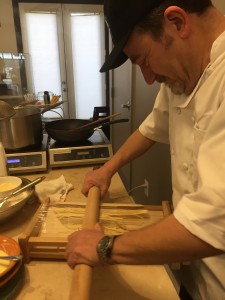
“It’s too much for one person,” he sighed.
“I could eat it all!” I exclaimed.
Ernesto shook his head. “No. Too much for one person.”
As he dropped the pasta into the boiling pot, I remembered that in Italy, pasta is just one of many courses in a meal. But before I could finish that thought, Ernesto had tossed the pasta into a pan, where he speedily sautéed it in bacon and carbonara. Suddenly, a masterpiece lay before me. My heart fluttered–even if it was “too much for one person,” no one else was there to eat it with me! But as Ernesto grated a pile of fresh parmesan onto his creation, I heard Bill’s voice ring out from across the cafe.
“We got here just in time!” he called to us, an old friend following just behind him. I sighed as Ernesto divided the spaghetti onto four plates. My glutenous, gluttonous dreams had been dashed, but that ceased to matter as soon as I took the first bite. It was absolute heaven, and once I’d cleaned my plate, I realized that Ernesto had been right. Any more than that would have been too much. I thanked him heartily, and walked back to my desk feeling sated, but not gorged. And for that, I was grateful.
-Lizzie



